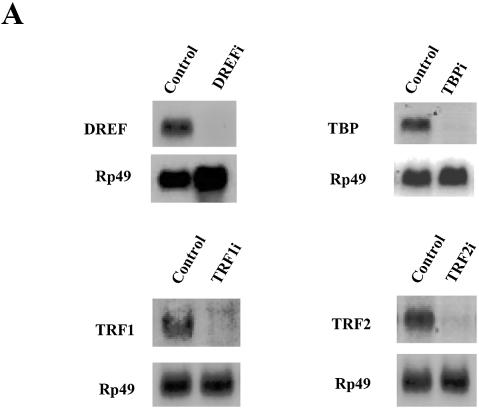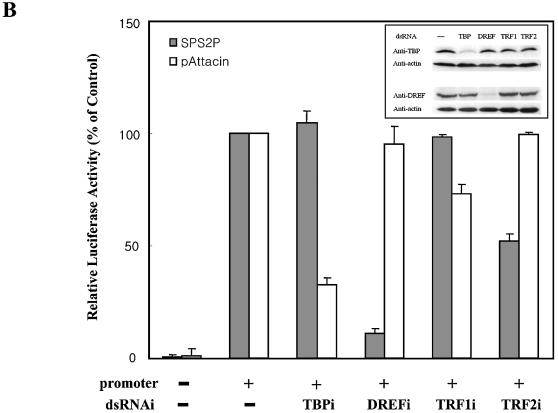Figure 7.
Effect of ablating transcription factors on the dsps2 promoter activity by dsRNAi. (A) Confirmation of the depletion of target mRNAs after dsRNA treatment. After adding dsRNA to Drosophila cells, total RNA was isolated and the level of target mRNA examined by northern blot analysis. The film was exposed for 24 h after hybridization. dsRNAs used in treating cells are shown on the top and probes used for hybridization on the left of each panel. Control designates the cells that were not treated by dsRNA. Rp49 was used as a loading control. (B) Effect of depleting transcription factors on the activity of dsps2 promoter. After introducing dsRNA into cells, the reporter plasmids were transfected and the level of luciferase activity was measured. The relative luciferase activity designates the amount of luciferase activity in dsRNA-treated cells relative to that of the non-treated control cells. SPS2P (closed bars) and pAttacin (open bars) designate plasmids containing the luciferase gene fused to the dsps2 and attacin promoters, respectively. No promoter designates basic plasmids. The standard deviations from the mean are indicated by error bars. The inset shows monitoring of the ablation of target protein by western blot analysis. Forty-eight hours after dsRNA treatment, cell extracts were prepared and western blot analysis was carried out using anti-DREF or anti-TBP antibody. Actin was used as a loading control. The experiments were performed in triplicate.


